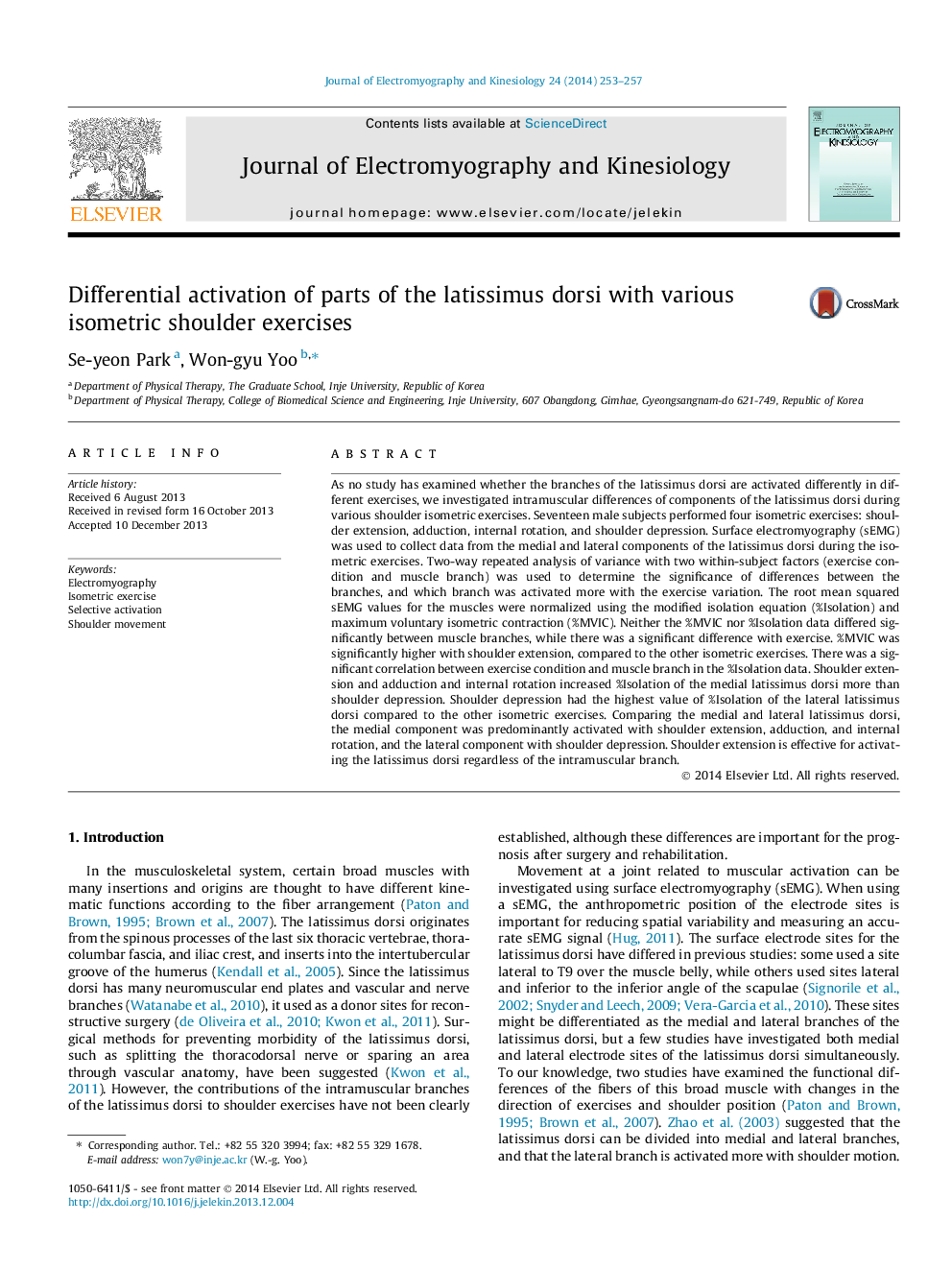| کد مقاله | کد نشریه | سال انتشار | مقاله انگلیسی | نسخه تمام متن |
|---|---|---|---|---|
| 4064662 | 1266221 | 2014 | 5 صفحه PDF | دانلود رایگان |
As no study has examined whether the branches of the latissimus dorsi are activated differently in different exercises, we investigated intramuscular differences of components of the latissimus dorsi during various shoulder isometric exercises. Seventeen male subjects performed four isometric exercises: shoulder extension, adduction, internal rotation, and shoulder depression. Surface electromyography (sEMG) was used to collect data from the medial and lateral components of the latissimus dorsi during the isometric exercises. Two-way repeated analysis of variance with two within-subject factors (exercise condition and muscle branch) was used to determine the significance of differences between the branches, and which branch was activated more with the exercise variation. The root mean squared sEMG values for the muscles were normalized using the modified isolation equation (%Isolation) and maximum voluntary isometric contraction (%MVIC). Neither the %MVIC nor %Isolation data differed significantly between muscle branches, while there was a significant difference with exercise. %MVIC was significantly higher with shoulder extension, compared to the other isometric exercises. There was a significant correlation between exercise condition and muscle branch in the %Isolation data. Shoulder extension and adduction and internal rotation increased %Isolation of the medial latissimus dorsi more than shoulder depression. Shoulder depression had the highest value of %Isolation of the lateral latissimus dorsi compared to the other isometric exercises. Comparing the medial and lateral latissimus dorsi, the medial component was predominantly activated with shoulder extension, adduction, and internal rotation, and the lateral component with shoulder depression. Shoulder extension is effective for activating the latissimus dorsi regardless of the intramuscular branch.
Journal: Journal of Electromyography and Kinesiology - Volume 24, Issue 2, April 2014, Pages 253–257
